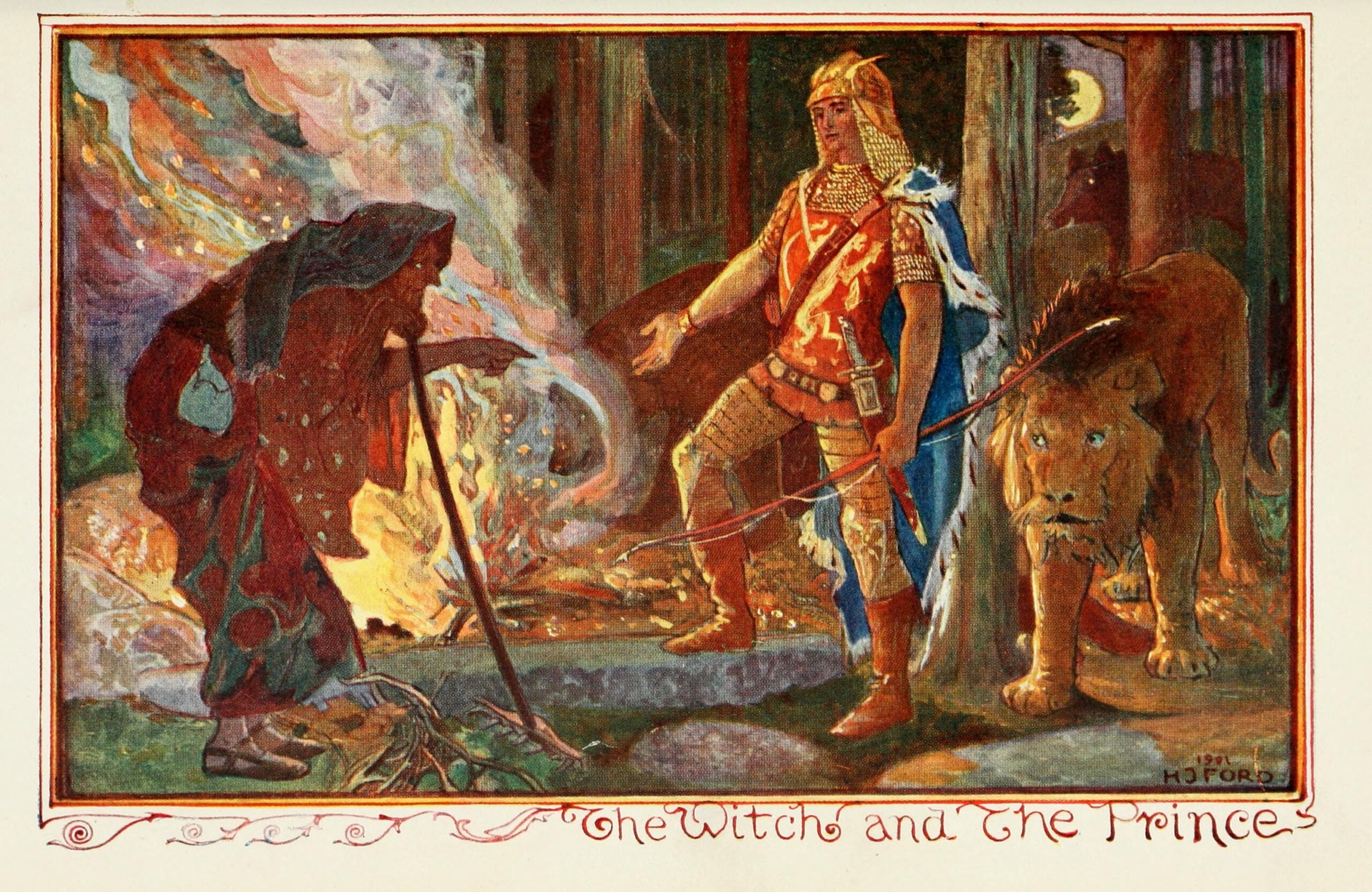Making an Encounter table is an interesting exercise. In some ways it is a statement of the tone of your game. Do you have a half dozen silly encounters? Do you have 8 generic wilderness encounters with beasts? Do you have combat encounters? Role playing? Chilling atmospheric encounters? Each says something about the style of game you are running.
Whatever the case, you are generating a list of events you wouldn’t mind showing in your game. You are generating a list of things that fit enough that you don’t care which one shows up. Even having an enormous table says something.
But some folks don’t know where to start. So here is a quick guide on how to make one.
Note: I used this technique to design an encounter table for my adventure, The Lost Library of Meldorin.
Start with the setting.
This may seem obvious, but it is also a key step. You need to focus on where this encounter table is describing. What is its reach? A chart for a small inn might reflect the odd characters inside it. A chart covering a forest will have a wider range of outcomes, some more perilous than others.
It is tempting to make one for the whole campaign world but that doesn’t work well. Campaign worlds are often too varied for one table to apply for the whole campaign world. An encounter table for Waterdeep is effective and useful. Having one for all Faerun is pointless.
Decide how many you want. Make sure it is enough to be interesting
The number of encounters you have will set the level of work you want to put into it. Keep it down to a useful number though. A table with 99 entries is a lot of work, but it is not always useful to have so many encounters. On the other end, having only 4 encounters on the table are too few to be meaningful.
Also bear in mind that you can also use it to set frequency. If you have roll a d10, but the table reads “1-4 encounter guards,” reflects that there are a lot of guards, or they are just very vigilant. If you have roll percentage, but only one entry appears on a role of 01, then you are making it exceedingly rare. Be aware of this factor when setting the number of events.
I recommend if it is a chart that you are only checking for a few sessions, then keep it short. If you use an encounter, unless you want it to be a repeated encounter, remove an encounter when you have finished and either replace it or change the required die rolls.
Fill in the fields
Once you have the number of events on the list, then you can decide what you what you want on that table As I suggested, the setting and number of events will suggest what that content is. A few encounters in a war zone are going to be mostly combat focused. An encounter table for a city neighborhood is most likely to be role playing encounters. Longer lists will need to include more types of encounters.
Make sure that you are brief but include enough that you can easily throw together the encounter. Make sure to use existing stat blocks from various books rather than write a new one. The idea here is to have a random, easy to throw together encounter. Writing new stat blocks edges into making a whole separate adventure.
Here is an example.
The party are being followed through the forest. A Wisdom (perception) DC15 will discover they are being followed. It will take another Wisdom (perception) or Intelligence(investigation) DC 18 will discover that animals are following them. A Wisdom (survival) DC15 will track the animals back to Keller (Use the Druid stat block) who is suspicious of the travelers through the forest. If attacked he will try to flee, but otherwise is open about his suspicions.
Now that may be a touch longer because it is more of a skill-based encounter, but it contains the bare minimum for you to run it at the table. Skill DC’s are there, a stat block to reference and role-playing details. You should probably not make random encounter write ups longer than that.
For a combat encounter it is much more straightforward.
The parties slipping through the forest has attracted the attention of an agitated Owlbear. It roars out of the trees and attacks the largest PC immediately.
It is clear what is happening, what triggered it, and gives guidance on the opening round of the encounter. The Owlbear has an extent stat block, so it is easy to look up. As far as combat encounters go, be aware of the level of the PC’s you are running through the adventure. They should mostly be challenging but not overwhelming.
That said, don’t be afraid to stretch that.
The party stumbles across a clearing with an Adult Green Dragon sleeping in the middle, a few pieces of dead adventurers lie around its sleeping form. A Dexterity (stealth) DC18 check will allow someone to sneak up and search the adventurers. The search turns ups 100gp and a +1 magic spear. If the dragon is woken by the PC’s it will attack immediately.
This encounter could be overwhelming for a lower-level party, but it is manageable. The pc’s can avoid it if they feel it is too dangerous and it gives a rogue to show off their cool abilities. It also suggests a story. The pc’s might want to know who these adventurers were and how they found themselves fighting a dragon? Why is the dragon so far from its lair?
Anyway, that is my guidelines for making a random encounter table. I may have used some D&D examples here, but the same ideas will work for a range of games. You might have to change the dice you use to roll on the table for games like Fantasy AGE or Cyberpunk Red, but the principles hold up.
I have created an example below that I would use for a lengthy journey through the woods. I have deliberately made it simple. If I wanted to be more complex, I make would two tables, one with more pleasant encounters and one with much more difficult challenges. Have a PC make a survival check to determine which chart I used. A successful check gets the nice one. Maybe if you have ranger, they just get the good one. There is potential there.
Roll 1D8 per day of travel.
| Result | Encounter |
|---|---|
| 1 | The party are being followed through the forest. A Wisdom (perception) DC15 will discover they are being followed. It will take another Wisdom (perception) or Intelligence(investigation) DC 18 will discover that animals are following them. A Wisdom (survival) DC15 will track the animals back to Keller(Use the Druid stat block) who is suspicious of the travelers through the forest. If attacked he will try to flee, but otherwise is open about his suspicions. |
| 2 | The parties slipping through the forest has attracted the attention of an agitated Owlbear. It roars out of the trees and attacks the largest PC immediately. |
| 3 | A small band of highwaymen have waylaid a traveling merchant on the road ahead. 5 Bandits and 1 Bandit captain (use stat blocks) are in the process of robbing a merchant on his cart. If seen, they will attempt to rob the PC’s as well. If the PC’s rescue to merchant, they will be willing to reward the PC’s with 25 gold, or 50 gold in common non magical items on their cart. |
| 4 | owned trees block the road. Three successful Strength DC18 checks will move the trees out of the way. Alternatively, a couple of hours with axes can disassemble it. PC’s on foot can bypass through the woods, but it may be difficult for horse or a wagon. |
| 5 | The party stumbles across a clearing with an Adult Green Dragon sleeping in the middle, a few pieces of dead adventurers lie around its sleeping form. A Dexterity (stealth) DC15 check will allow someone to sneak up and search the adventurers. The search turns ups 100 gp and a +1 magic spear. If the dragon is woken by the PC’s it will attack immediately. |
| 6 | A torrential downpour begins, and the road turns to mud. The party’s movement along the road is halved and after a day of slogging through the muddy road they must make a Constitution DC 13 save or gain a level of exhaustion. |
| 7 & 8 | Nothing happens. The weather is clear, the breeze is sweet, and the wildlife avoid any travelers. |
This is a good encounter table for a group of PC’s, 3rd to 5th level, traveling through the woods. The dragon may be a problem if they chose to fight, but it is an easy fight to avoid.
Conclusion
Truth be told, I used to hate encounter tables in the old days. The idea of having random tables to roll on seemed boring and weird. The more recent versions I have seen for fifth edition have been much more interesting. They gave delightful story hooks and it made me want to use them more. I hope this little tutorial helps you to make your own.


